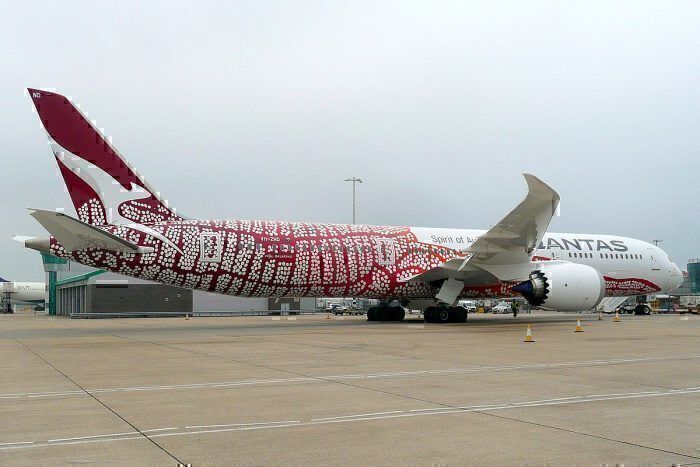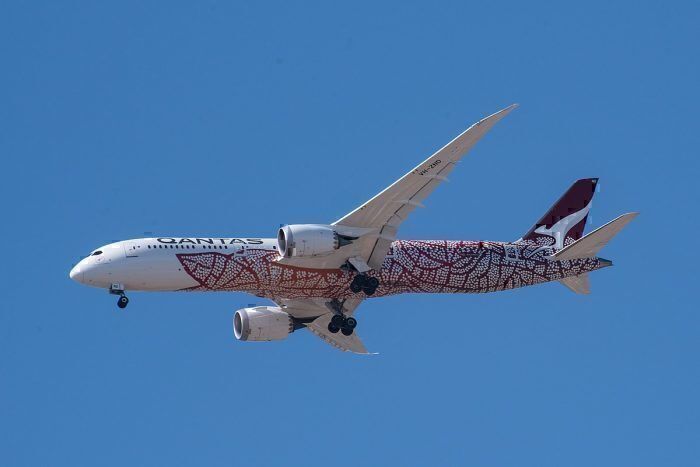**UPDATE: 09/02/20 @ 17:44 UTC. Qantas has issued a statement on the incident.**
Earlier today, a Qantas Boeing 787-9 has been spotted circling London after a suspected tail strike on the takeoff towards Perth. Sources show the aircraft had not even left British aerospace before it decided to divert back to London. Initial speculation suggests that Storm Ciara is to blame.
London to Perth postponed
A Qantas 787-9 Dreamliner registered as VH-ZND operating flight QF10 between London and Perth was spotted circling London earlier today. The aircraft is thought to have been damaged after a tail strike.
VH-ZND should have left London Heathrow Airport at 11:55 (UTC) but was delayed by over an hour on 9th February 2020. The delay could have been due to poor weather conditions. The aircraft was then expected to complete the 16-hour plus flight by landing in Australia at 04:30 (UTC) the following day. However, that will now be postponed.
When the aircraft did leave at 13:00 (UTC), bound for Perth Airport, it didn't make it very far out of Heathrow airspace. The aircraft was reported by Flight Radar 24 to be circling London. However, shortly after it was seen back on the ground. According to reports on Twitter, the flight will now be canceled. It is unclear what will happen with passengers on board the flight or the exact extent of the damage.
Reports of a possible tail strike
Regarding the cause of the incident, a spokesperson at Qantas shared the following with Simple Flying:
"During takeoff the aircraft experienced a suspected tailstrike, and the pilots elected to return to
London Heathrow. Engineers have inspected the aircraft and found there is no damage to the fuselage. As the crew would have exceeded their maximum duty limits on the flight to Perth, the flight has been canceled. Customers have been booked on the next available flights."
Britain is currently in the throes of what has been dubbed the storm of the century, with Storm Ciara delivering 90mph winds and a deluge of rain, ruin, and destruction. Could this have been the reason for a tail strike?
Photos on social media are not indicative of the damage.
How bad is a tail strike?
In this instance, it does not appear that anyone was hurt according to initial reports. Good direction from the crew meant that everyone was delivered back to the ground safely.
Returning to the ground after a tail strike is a common practice since tail strike incidents can be incredibly dangerous. They occur during landing or, in this case, take-off when the tail of the aircraft connects with the ground. Tail strikes might not cause severe damage to the aircraft however it's important that they return to the ground in any event. A thorough inspection must be carried out to ensure that no lasting damage has been caused.
That's in the best-case scenario however things can be a lot worse.
In 2002, a China Airlines flight was involved in a fatal accident as a result of improper repairs after an earlier tail strike. On 7th February 1980, the aircraft had incurred a tail strike whilst landing in Hong Kong. The inaccurate repair of the aircraft resulted in gradual fatigue cracking which eventually broke the aircraft mid-flight between Taoyuan International Airport in Taiwan and Hong Kong International Airport on 25th May 2002.
Needless to say, proper maintenance post tail strike is paramount to the physical health of the aircraft.
Let us know your thoughts on this story in the comments.Â




